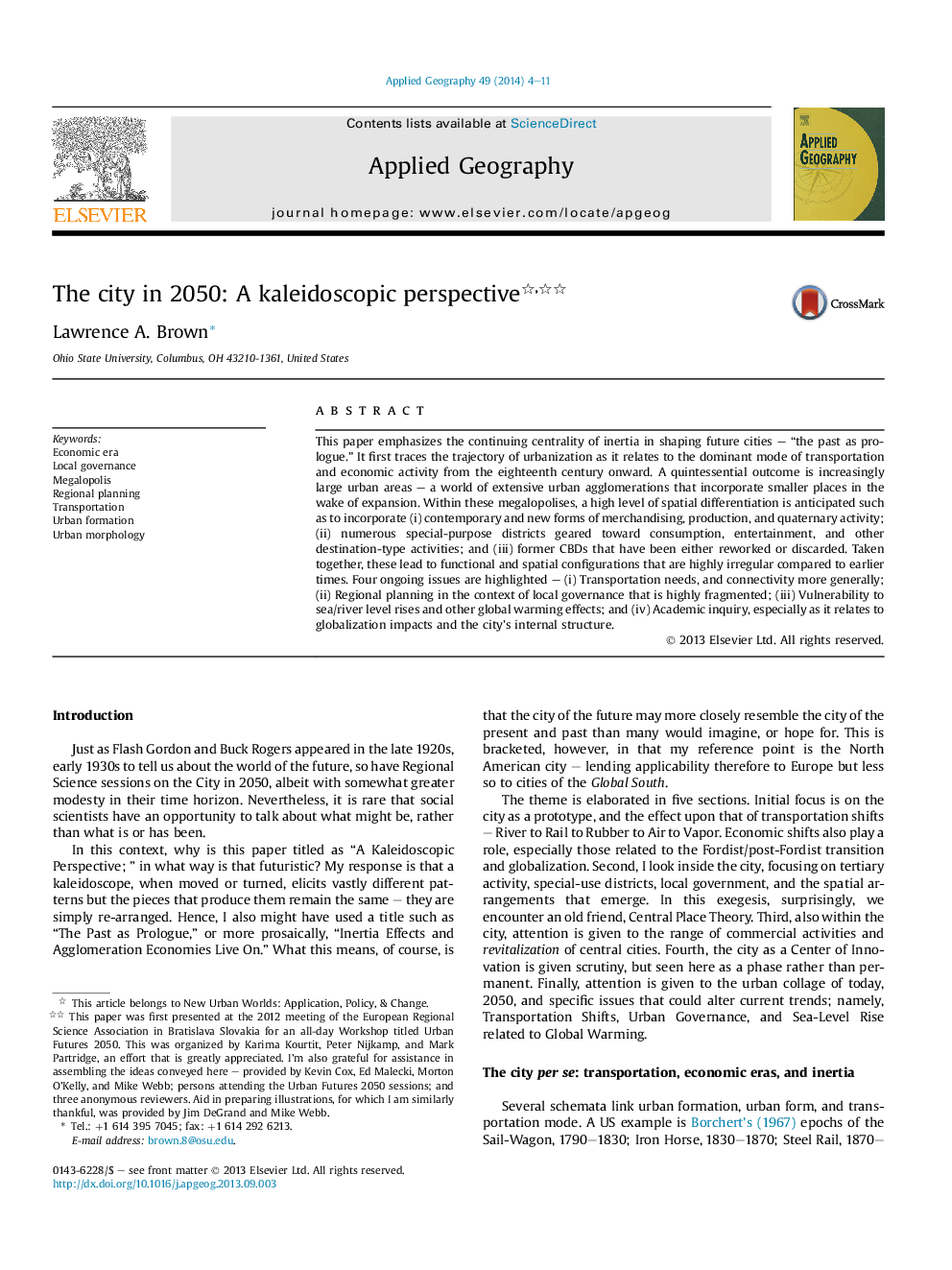| Article ID | Journal | Published Year | Pages | File Type |
|---|---|---|---|---|
| 83230 | Applied Geography | 2014 | 8 Pages |
This paper emphasizes the continuing centrality of inertia in shaping future cities – “the past as prologue.” It first traces the trajectory of urbanization as it relates to the dominant mode of transportation and economic activity from the eighteenth century onward. A quintessential outcome is increasingly large urban areas – a world of extensive urban agglomerations that incorporate smaller places in the wake of expansion. Within these megalopolises, a high level of spatial differentiation is anticipated such as to incorporate (i) contemporary and new forms of merchandising, production, and quaternary activity; (ii) numerous special-purpose districts geared toward consumption, entertainment, and other destination-type activities; and (iii) former CBDs that have been either reworked or discarded. Taken together, these lead to functional and spatial configurations that are highly irregular compared to earlier times. Four ongoing issues are highlighted – (i) Transportation needs, and connectivity more generally; (ii) Regional planning in the context of local governance that is highly fragmented; (iii) Vulnerability to sea/river level rises and other global warming effects; and (iv) Academic inquiry, especially as it relates to globalization impacts and the city's internal structure.
